The city of Ushuaia is at the tip of South America on the south coast of Isla Grande, the largest island of the Tierra del Fuego archipelago in Patagonia.
Isla Grande, half of which belongs to Chile, is separated from the rest of the continent by the Strait of Magellan. Ushuaia’s isolation is reinforced by the barriers of the Andes inland, and the ocean stretching to Antarctica.
All that isolation, however, is part of the appeal. Surrounded by raw nature, whipped by winds from the South Pole, you can feel the fragility, and wonder of life in a place that will stay always in your memory.
Why Visit Ushuaia, Argentina
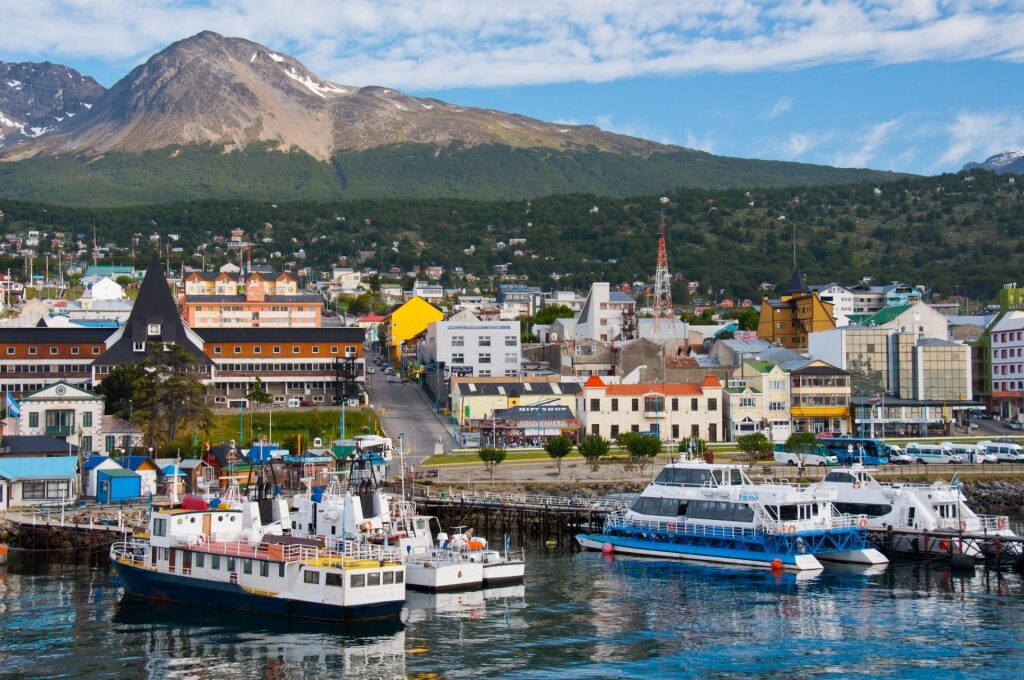
Ushuaia Harbor
The natural wonders of Patagonia, and its wildlife, are the key attractions for any visitor to Ushuaia.
This city of 150,000 people stands facing Antarctica, an outlook that shapes its weather, and its climate. While firmly Argentine, it has its own character molded by that geography, and that weather.
Modern but historic, remote but connected, this is a place that is fascinating in its contrasts, general quirkiness, and natural grandeur. Everyone comes with preconceptions that do little to match the reality, and appeal, of the world’s most southerly city.
History & Culture
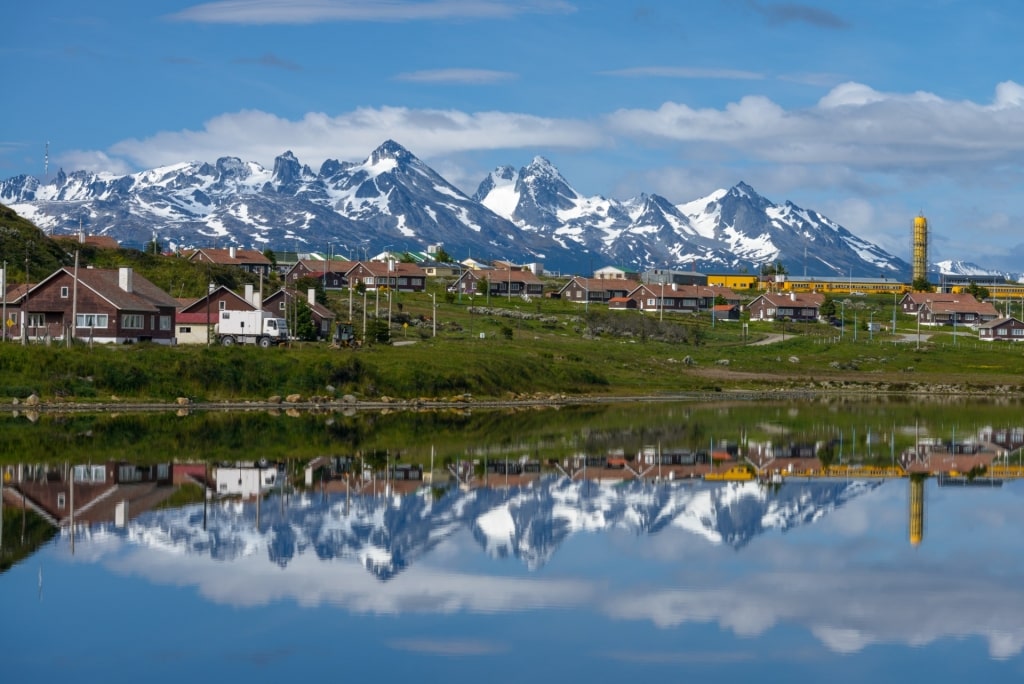
Ushuaia
The name of Ushuaia—meaning “deep bay”—comes from the indigenous people who lived here for thousands of years before the Europeans first arrived. The “bay” is a sheltered spot on the Beagle Channel, the waterway that runs to the south of Tierra del Fuego.
A group of British missionaries founded a settlement on the natural harbor here in 1869. That then came under Argentine control when the nearby border with Chile was agreed in 1881.
Most of the aboriginal people had disappeared by the early 1900s, the victims of disease or genocide. This remote location also lent itself to the site of a prison, which held hardened criminals and political prisoners.
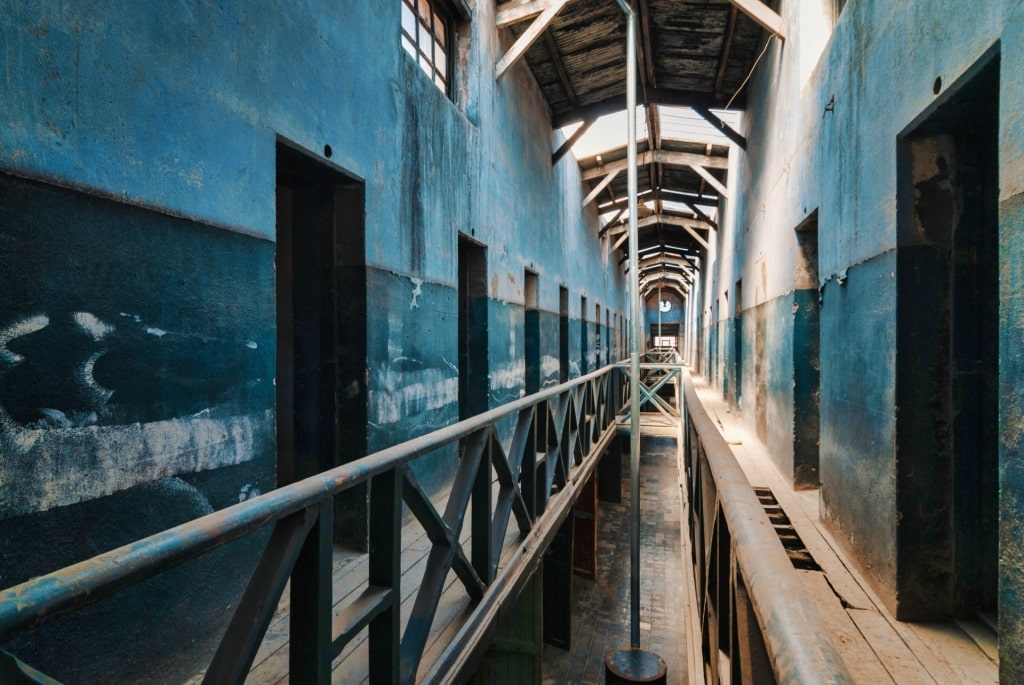
End of the World Museum
The prison closed in 1947 but by then, its inmates had cleared the forest to build a town, and laid a railway line. Sheep farming, timber, and a small offshore oil field, not to mention tourism, are the foundations of the city’s wealth.
There is also a small electronics industry, helping give Ushuaia the highest average salaries in Argentina. Of course, living costs are also high because so much has to be imported, but in compensation it has very low tax rates, including duty-free shopping.
Wildlife & Nature
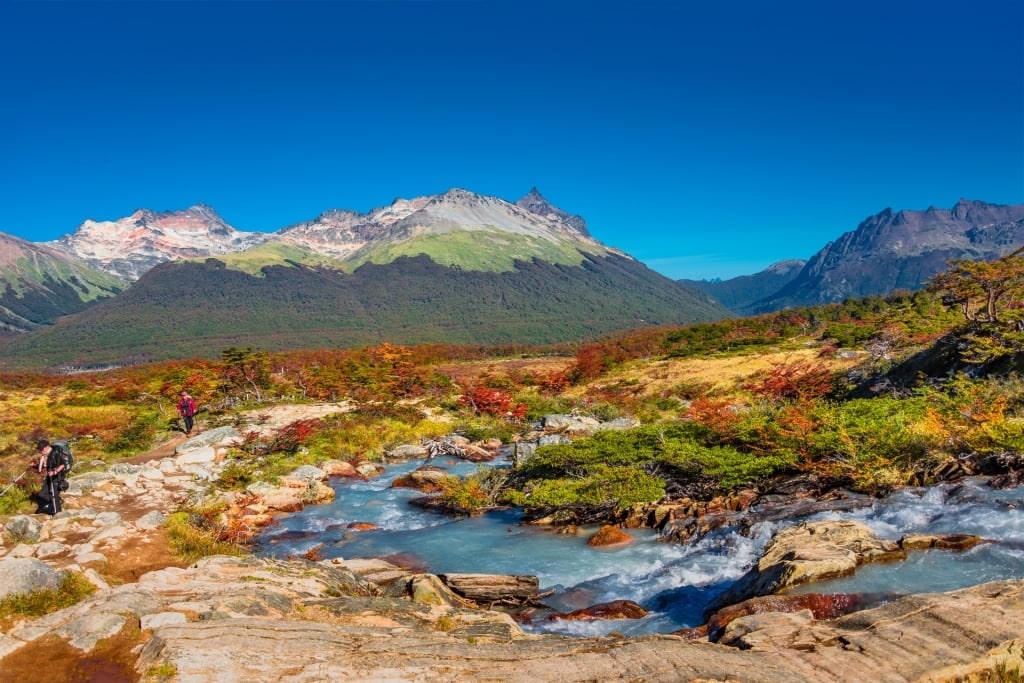
Tierra del Fuego National Park
The untamed nature within easy reach of Ushuaia is its major attraction, home to Patagonian wildlife from condors and oystercatchers to animals such as foxes, guanaco, rabbits, and beavers.
One star attraction is the always-entertaining penguins, who arrive in October and stay until late March—happily coinciding with the summer tourism season. The Tierra del Fuego National Park, and cruises on the Beagle Channel are places to see them, many other birds, and other wildlife.
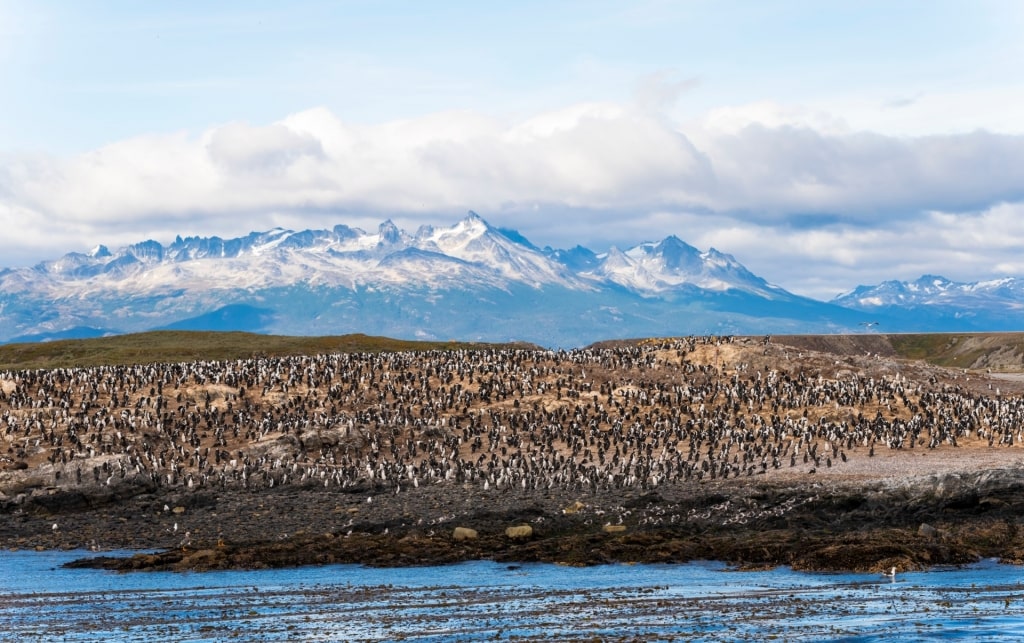
Magellanic penguins
Anywhere around Ushuaia, you are sure to see some unusual South American bird species. From the black-browed albatross, through the Magellanic penguin, to the flightless steamer duck, you’ll hopefully spot many that are new to you.
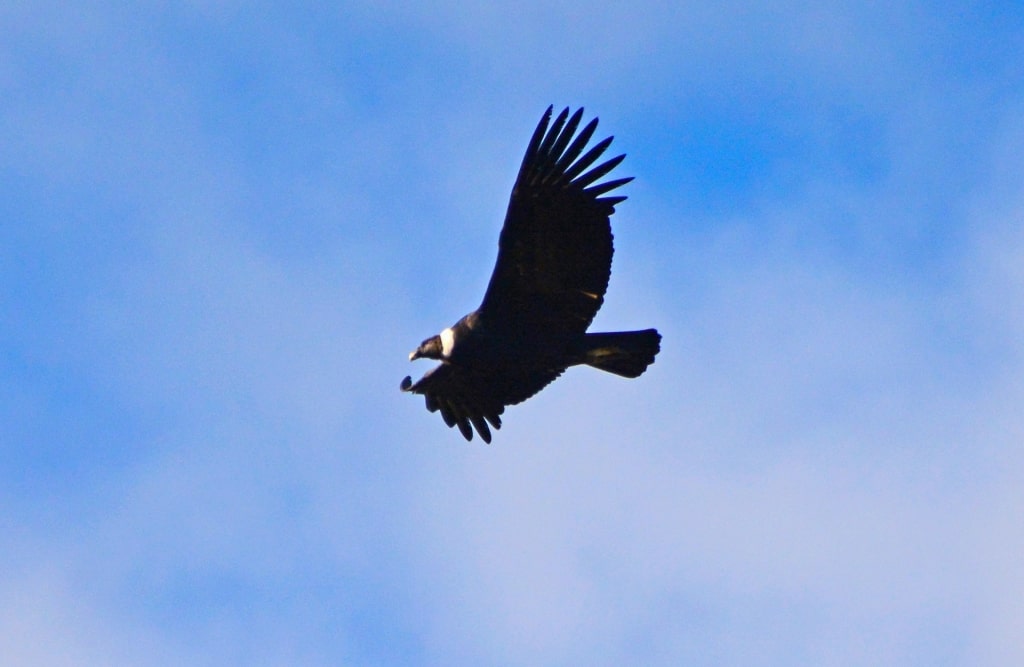
Andean condor
The Tierra del Fuego National Park is one of the best birding routes. It combines forest, and views of the Beagle Channel, offering the chance to see a wide range of species. The park alone has some 90 species of birds, including the Andean condor.
Tips for Visiting Ushuaia
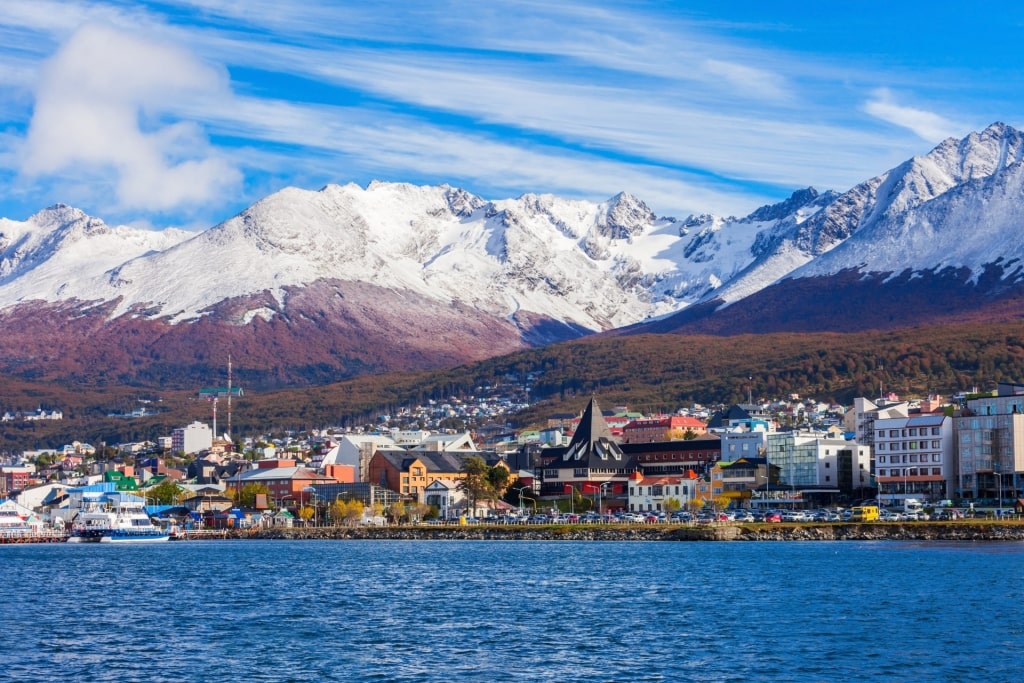
Ushuaia
The weather in Ushuaia may not be as severe as you’d expect from its extreme southerly setting. But you do need to be prepared for drizzle or rain at any time, so bring a rain jacket (and pants) with you. With 17 hours of daylight in summer, it’s also wise to pack sunscreen.
US dollars are widely accepted, but a notable expiation is national parks, where entry fees have to be paid in Argentine pesos, and credit cards are not accepted. Spanish is the language of Argentina, but English is widely spoken in tourism outlets.
As a duty-free city, Ushuaia has become a paradise for shoppers, particularly those from other parts of Argentina. There is even a new shopping mall near the main shopping street of Av. San Martín.
If you’re in the market for crafts, head for Paseo de Artesanos near the port. Local artisans here offer silverware, ceramics, carvings, leatherwork, and other goods to remind you of your visit.
Things To Do & Attractions in Ushuaia
Be Awed by Tierra del Fuego National Park
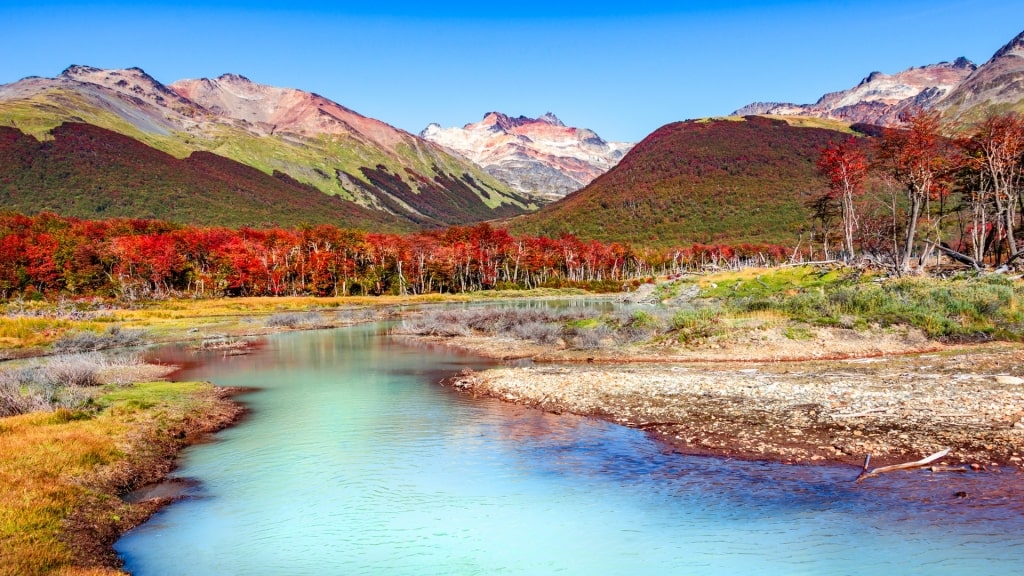
Tierra del Fuego National Park
One of the best national parks in the world, Tierra del Fuego National Park features ocean, forest, and mountain, a combination of unique scenery and pure air. Far from the rest of Argentina, it is a place to feel close to nature, and to wildlife.
You can walk forest trails, listening to the call of birds, or along the coast of the Beagle channel, watching for whales or dolphins. Trek to a South American waterfall or glacier, or study the native forests of lenga beech and cooihue.
Ride the End of the World Train
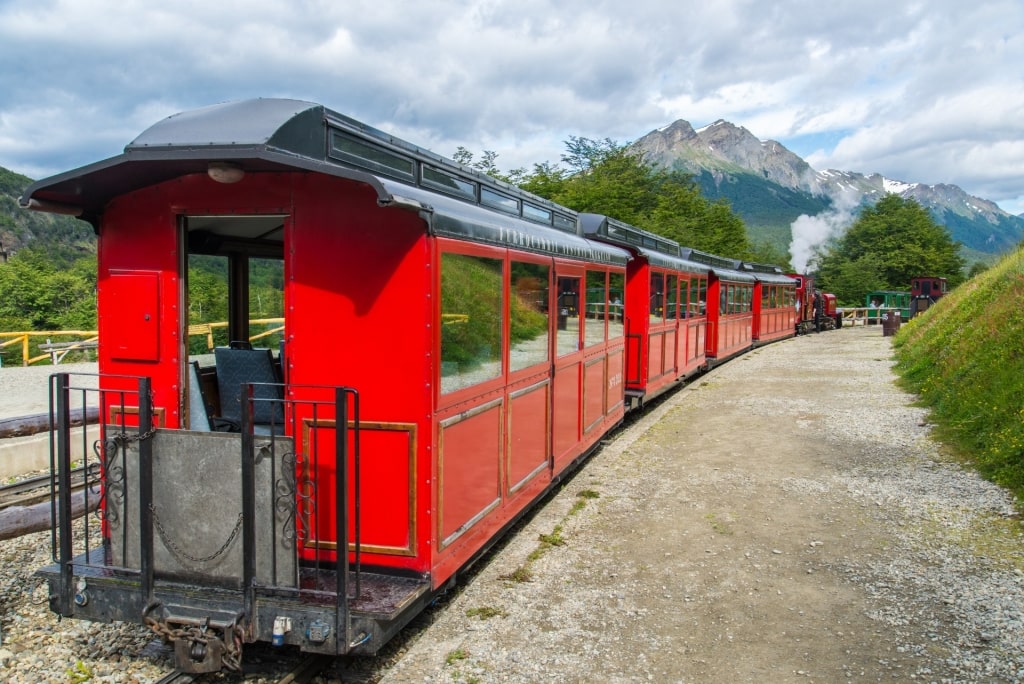
End of the World Train
This five-mile railway was built in 1910 by convict labor, and used to bring timber and stone to Ushuaia for construction. Restored in 1994, riding the train is one of the best things to do in Ushuaia for a scenic, year-round way into the Tierra del Fuego National Park.
Steam locomotives (or sometimes diesel) pull the cars, while a multi-language commentary highlights points of interest. These include the Pipo River, La Macarena waterfall, and Burnt Bridge viewpoint.
Cruise the Beagle Channel
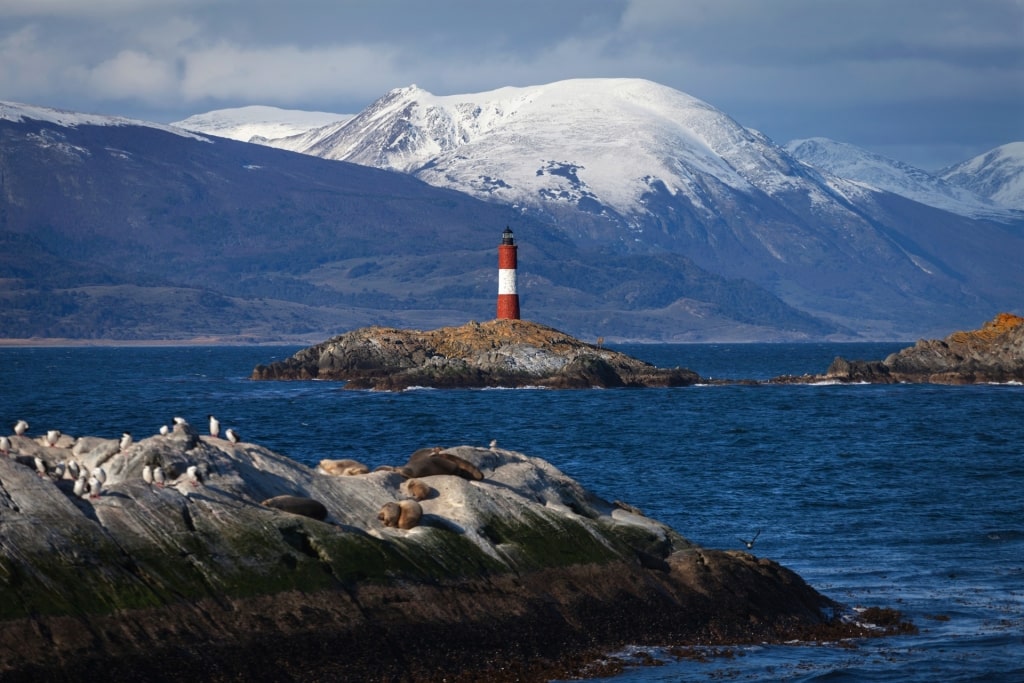
Beagle Channel
The best way to explore the Beagle Channel is on one of the catamaran cruises which regularly leave the port. The channel connects the Atlantic and Pacific Oceans, but cruises stick to the much calmer waters within closer reach of the shore.
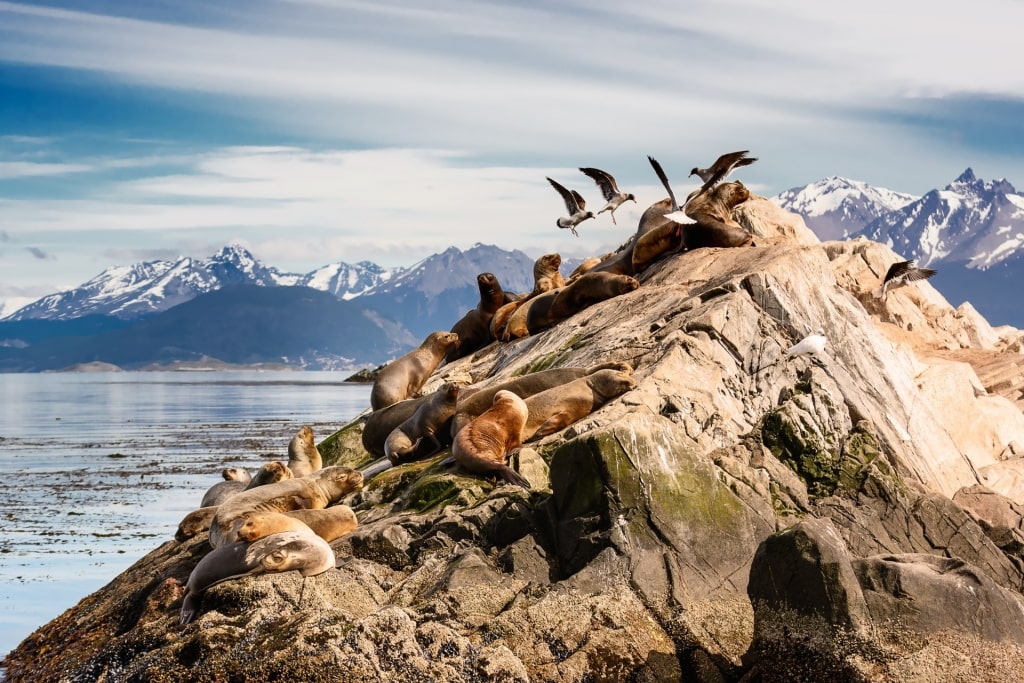
Beagle Channel
Sights include the Les Éclaireurs Lighthouse, and some of the countless islands. Most host colonies of penguins, cormorants, seals or sea lions, so any cruise is also a wildlife experience.
You might also see an albatross, and minke whales or dolphins are also common. The scenic beauty of the glaciers, and snow-capped mountains, all reflected in the calm waters, is also spectacular.
Read: Visit Patagonia: Everything You Need to Know
Sail Past the Eclaireurs Lighthouse
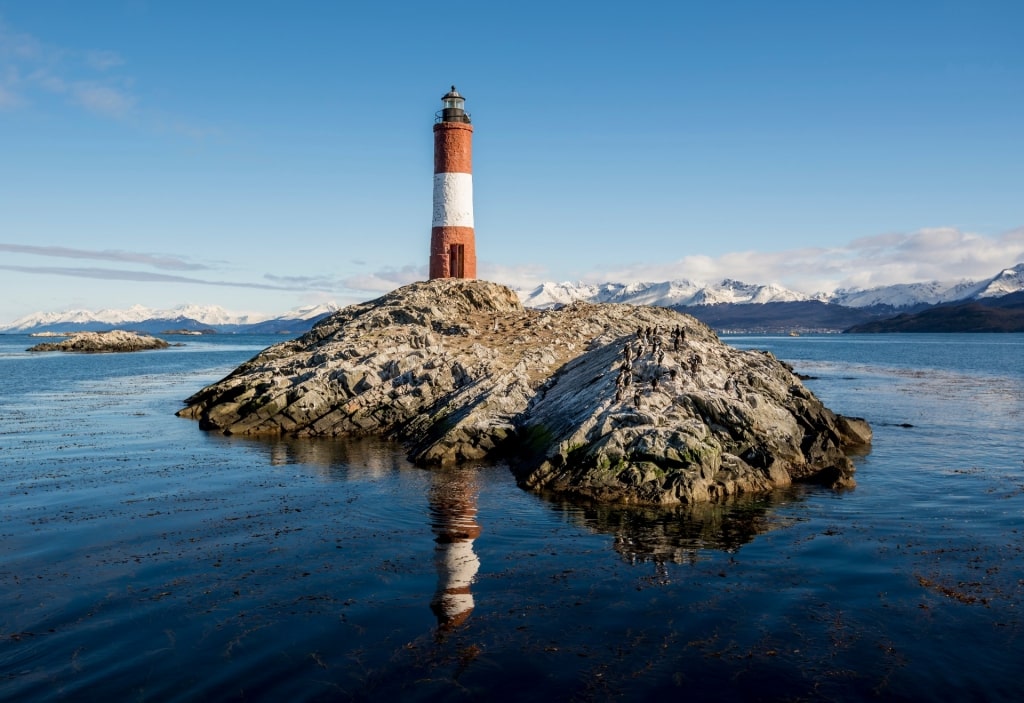
Eclaireurs Lighthouse
One of the best lighthouses in the world, this is a prominent landmark five nautical miles east of Ushuaia on the Beagle Channel. Reachable only on boat tours, it protects the approaches to the city’s harbor.
Eclaireurs means “Explorers” and comes from the islands on which it stands, named by a French expedition in 1883. A classic red and white striped tower, it’s often mistakenly called the “Lighthouse of the End of the World”.
The confusion comes from a Jules Verne novel with that title published in 1905, 15 years before Les Eclaireurs was built. His inspiration was the San Juan de Salvamento lighthouse on Isla de Los Estados, now rebuilt in the Maritime Museum of Ushuaia.
Visit the World Prison Museum
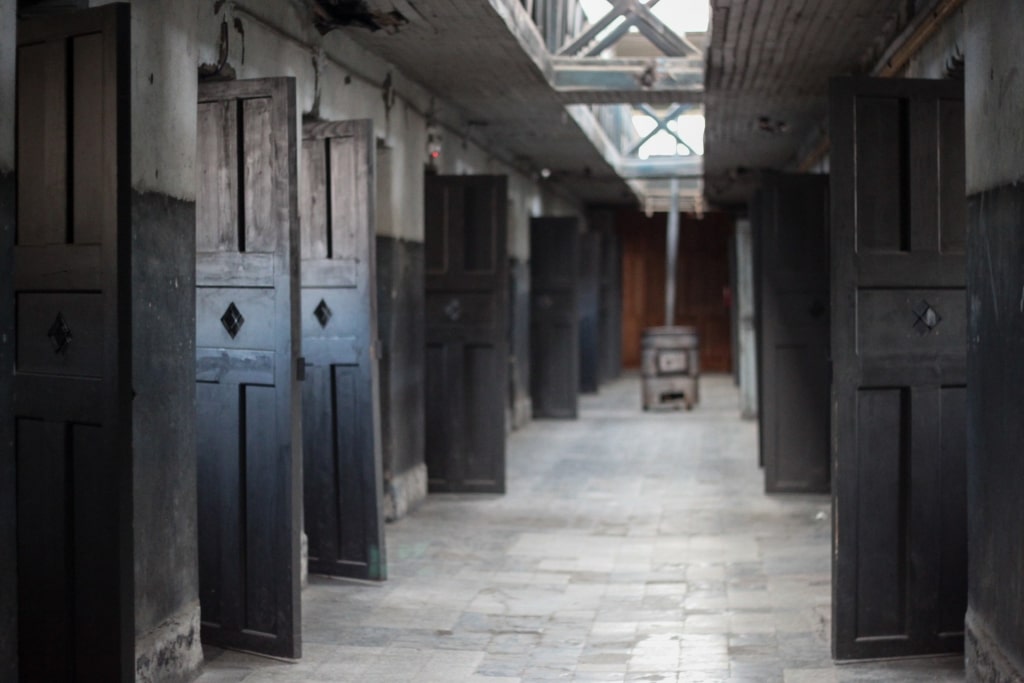
World Prison Museum
This former prison is now a complex with several museums onsite. These include the Maritime Museum, Antarctic Museum, and Museum of Marine Art, as well as the Prison Museum itself.
Quite how grim the prison must have been from 1902 to 1947 can be seen from the vivid tableaux of a prisoner in his cell, the historic photos and other exhibits. Just walking its corridors, peering into cells, evokes its deliberately oppressive atmosphere.
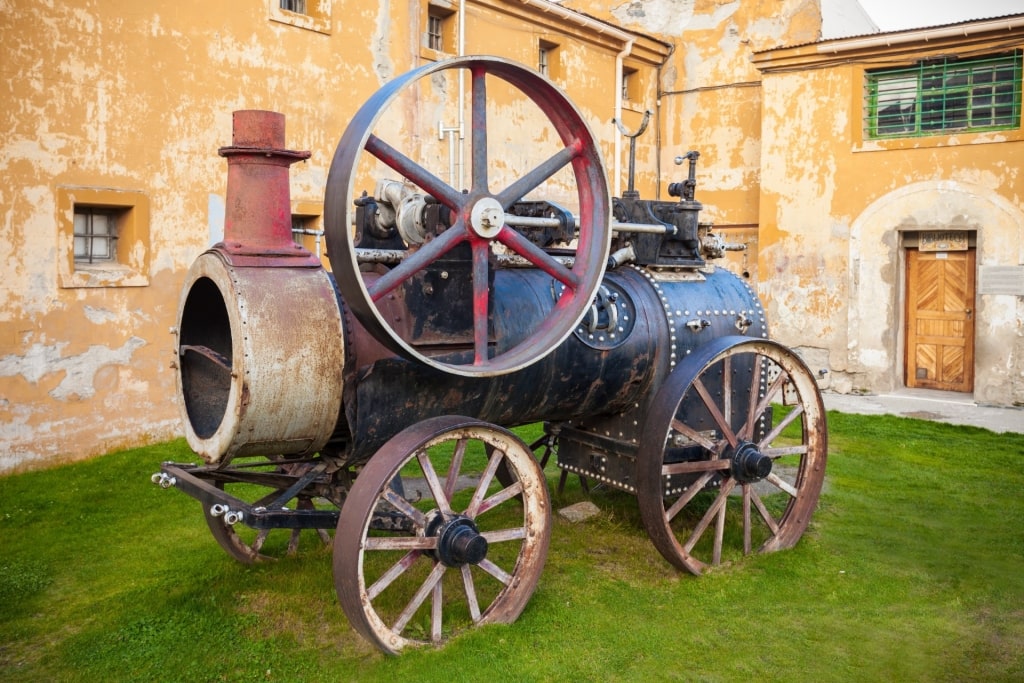
Maritime Museum
The city’s relationship to the sea is explored in the Maritime Museum, and the Museum of Marine Art. A highlight is the collection of ship models, including many old sailing vessels, and even the wrecked St. Christopher.
The Antarctic Museum explores the lives of famous explorers such as Amundsen, Scott, and Shackleton. Again, its detailed ship models are a highlight of its fascinating collection.
Contemplate the Malvinas Memorial
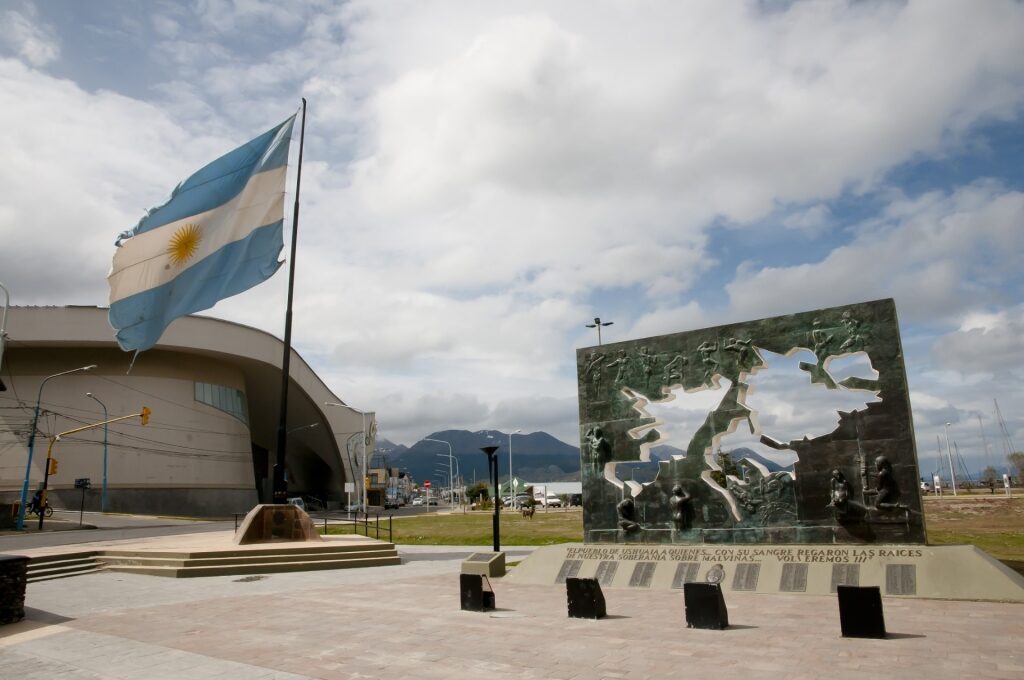
Malvinas Memorial
Ushuaia played a key role in the 1982 conflict between Argentina and the United Kingdom over the Malvinas/Falkland Islands. This memorial was built by local people to mark the death of 649 young men far from home.
Its central features are an eternal flame and a bronze slab with a cut-out of the Malvinas. Through the opening, you can see the ocean, and feel its winds in a haunting, evocative tribute to the dead.
Photograph the St. Christopher Tugboat
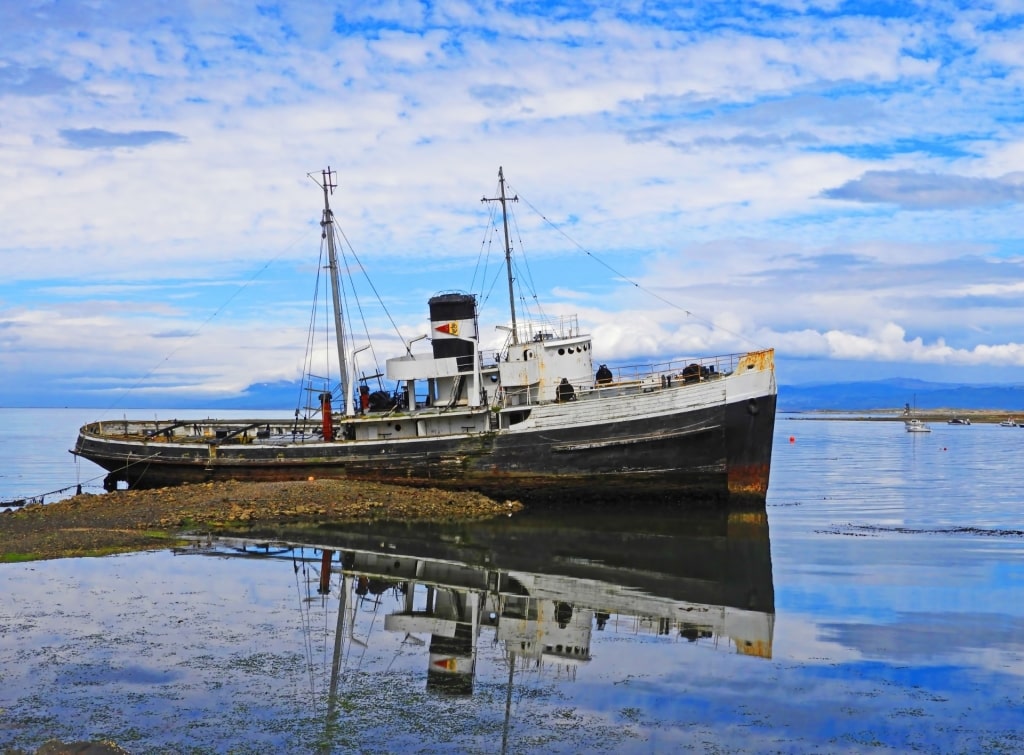
St. Christopher Tugboat
This wooden tugboat is a prominent landmark, lit up at night, on the Ushuaia harbor front. It was beached here in 1957 after its owner went bankrupt.
Originally built in Camden, Maine, it served as HMS Justice in the British Royal Navy during World War II. Post-war, after a year in US Navy colors, it was sold to an Argentine businessman.
The tug was brought to Ushuaia in 1953 to help salvage the “SS Monte Cervantes”, a small ocean liner that had hit an uncharted rock in 1930. The salvage operation was ultimately unsuccessful, and the “St. Christopher” ended its own days where you see it now.
Join a 4×4 Adventure
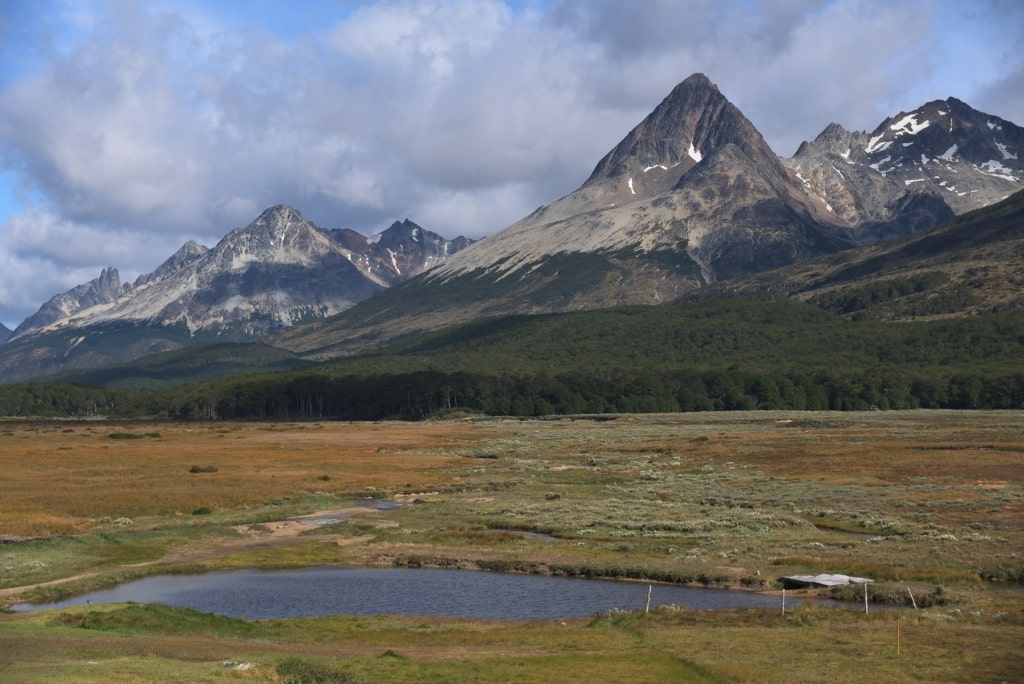
Carbajal Valley
With the vast spaces of Tierra del Fuego to explore and the rough conditions of its raw nature, a 4×4 is a great way to see more. Take a tour with an experienced company to the lovely Carbajal Valley in the Fuegian Andes to see some of its forests and other wonders.
Carved by an ancient glacier, the valley’s floor is covered by colorful peat moss. Lakes Fagnano and Escondido are scenic gems, where barbecue lunch is a popular stop.
Go Fishing
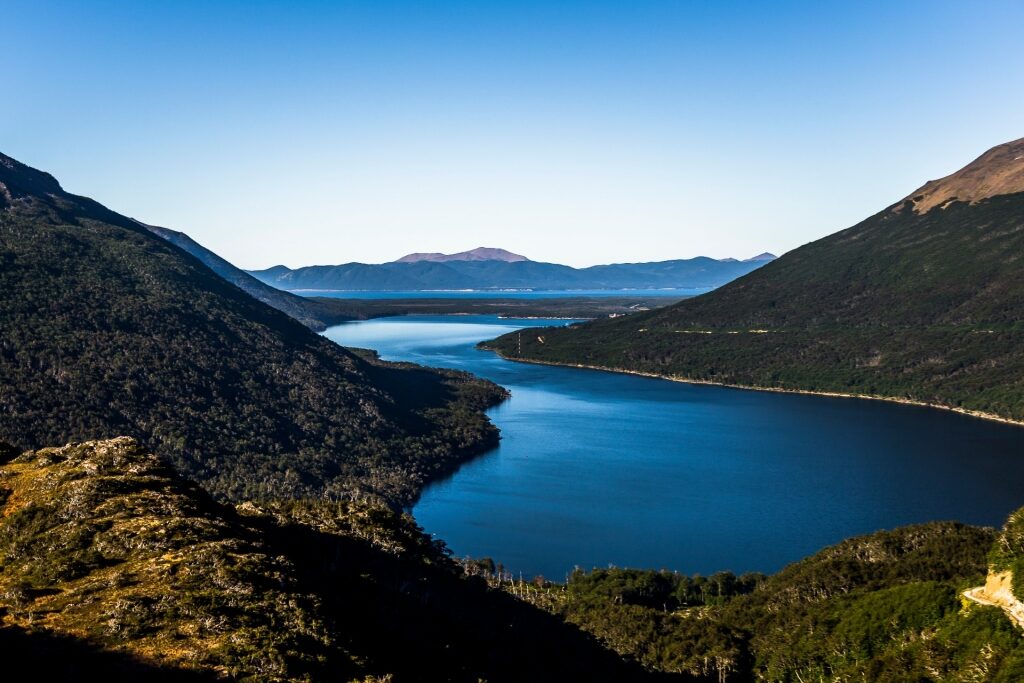
Escondido Lake
Escondido Lake, wrapped by the Patagonian forest and the Andes mountains is a great spot for fishing.
It’s reached through the Garibaldi Pass, about an hour north of Ushuaia. Fished by semi-rigid boats, with fly or spinners, brown and rainbow trout are the key catch-and-release species.
Both experienced anglers and complete beginners are welcome to try their skills. Fishing guides will also arrange a lunch of local produce.
Explore the End of the World Museum
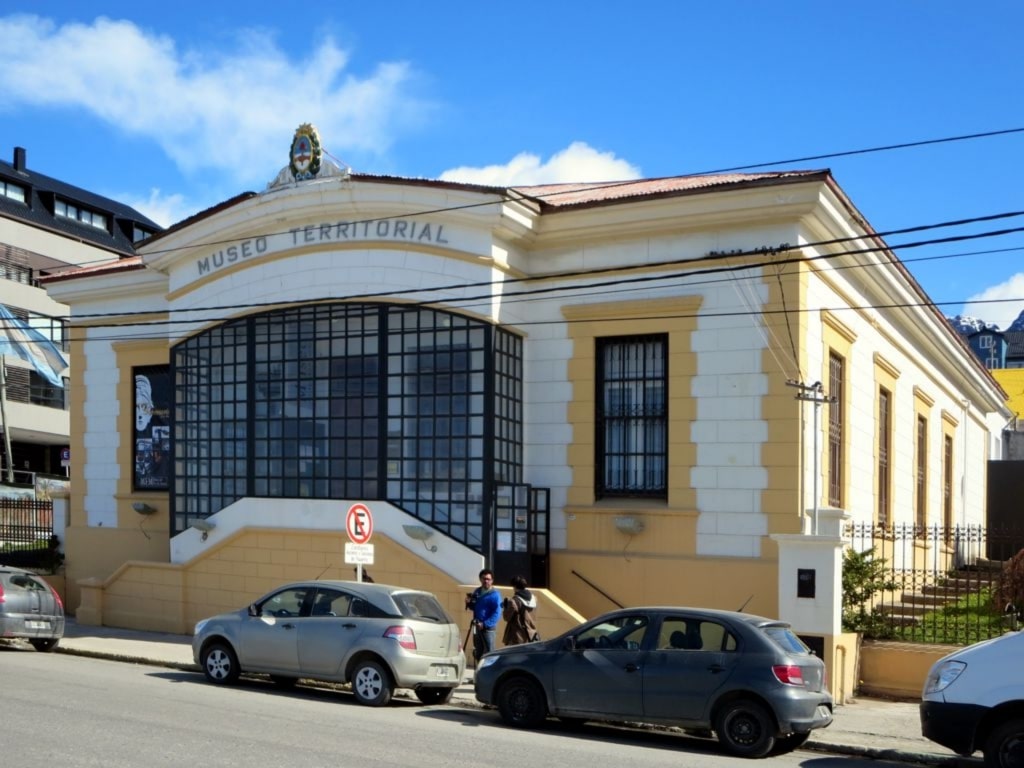
End of the World Museum Photo by David Stanley on Flickr, licensed under CC BY 2.0
Not to be confused with the museum at the former Ushuaia Prison, this downtown museum is set in a historic house. It does have a section devoted to the stories of some former prisoners, however.
Just as interesting are the stories it tells of other former Ushuaia inhabitants, from the native Yagán people, to shipwrecked sailors, and explorers. Other rooms are devoted to the natural history of Tierra del Fuego, including a collection of 180 bird species.
Food & Drink
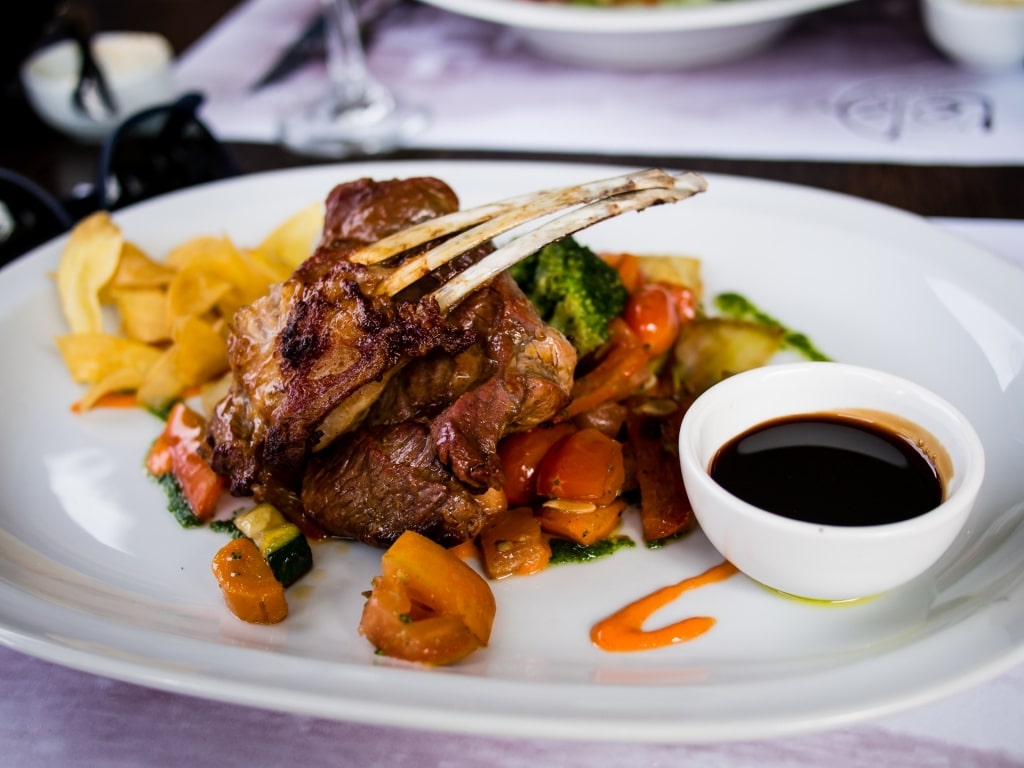
Patagonian lamb
Argentina food, and wines, probably need no introduction. To the joys of a good steak, and a fine Malbec, Ushuaia adds Patagonian lamb, and fresh local spider crab.
Popular restaurants for seafood include El Viejo Marino, and Tía Elvira, both near the port. Further out is Kalma Resto, a fine dining experience well worth the small extra distance.
For lamb, Bodegón Fueguino is an atmospheric destination. Go off the beaten path to Dieguito, packed with locals, for its empanadas and other comfort foods.
The Mercado del Jardín is a good one-stop place to find a number of eateries offering everything from pizzas to sushi to eat at communal tables. It’s also interesting for its local producers selling their food, and drink, as well as having a bookshop and interesting souvenirs.
Hot chocolate is the perfect drink for the Ushuaia climate. Ask for a “Submarino” in any café, and you’ll be served hot milk with a bar of chocolate to stir into it.

Alfajores
Visit Laguna Negra on Av. San Martin for some of the best chocolate in town. You can drink it, eat it as cakes or alfajores, or bring some home as a present.
The city has a very busy, and surprisingly varied, restaurant scene. Join a number of culinary tours to learn more with a local guide.
Best Time to Visit Ushuaia
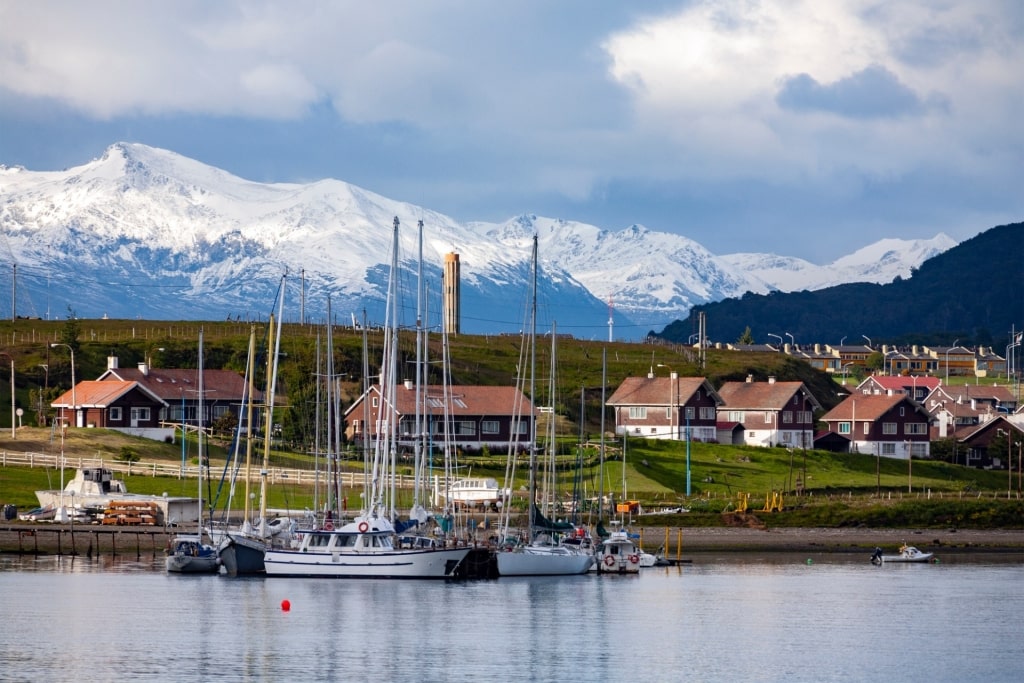
Ushuaia
In winter (June through October), you can ski near Ushuaia, but that is scant compensation for the short days and cold weather. Summer (December through March) is the best time to visit, with long hours of daylight, and average temperatures of 50ºF.
However, it’s not unknown to see flurries of snow even in summer. The only thing predictable about the weather in Ushuaia is that it isn’t.
One thing you can depend on is the wind as a constant from October to April. That can bring a chill to summer days, but short-sleeve days are still common.
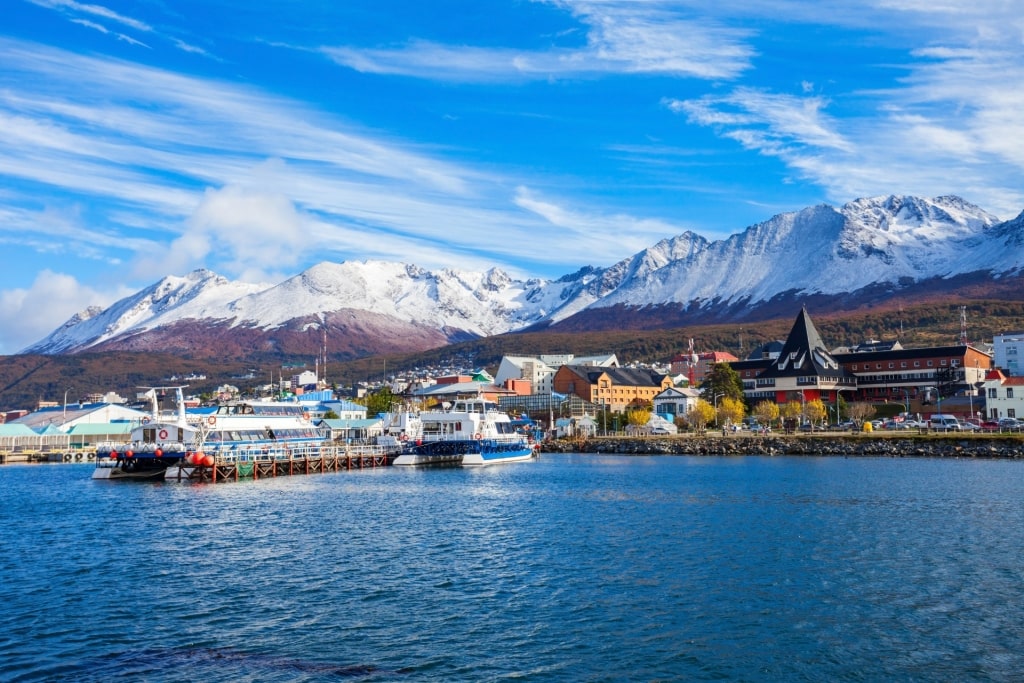
Ushuaia
Has this guide to Ushuaia, Argentina inspired you to visit the world’s most southerly city? Then browse Celebrity’s cruises to Ushuaia to find the perfect sailing to this land of natural wonders.



